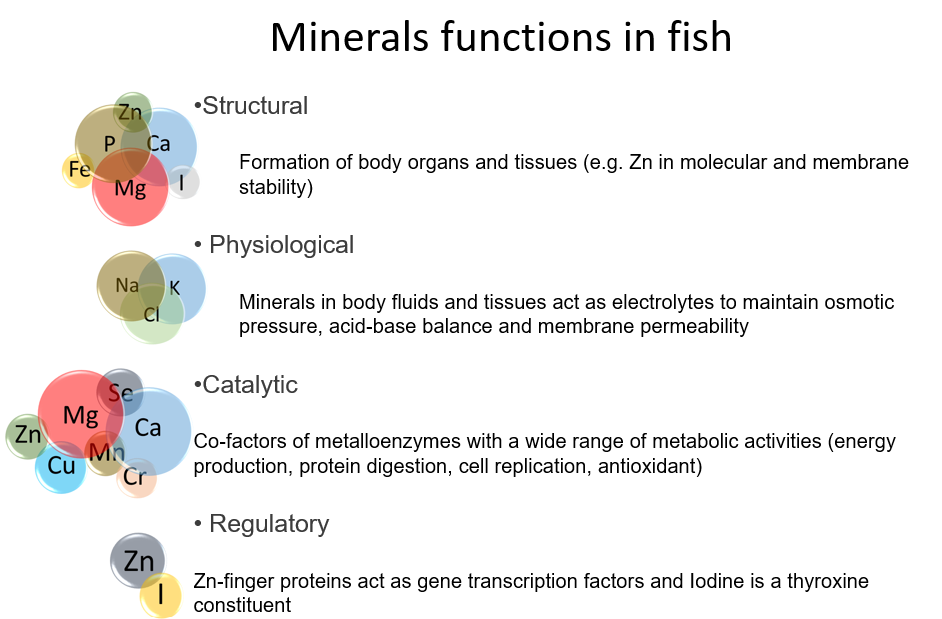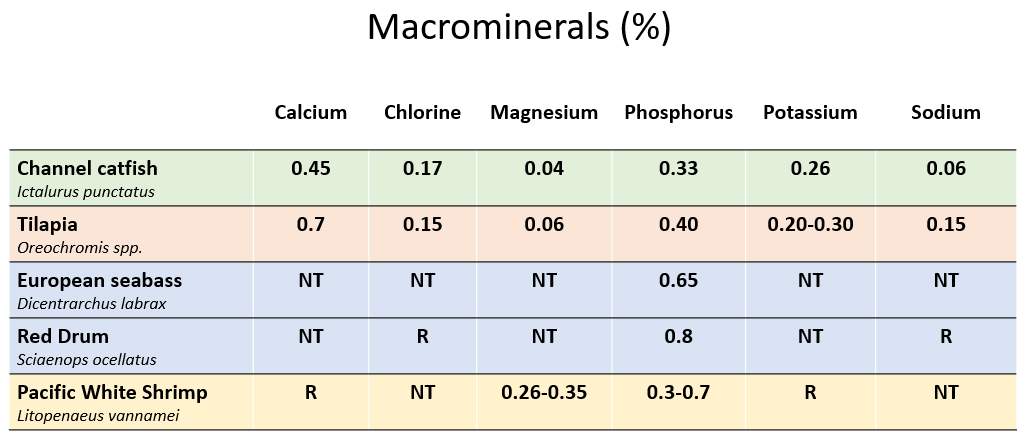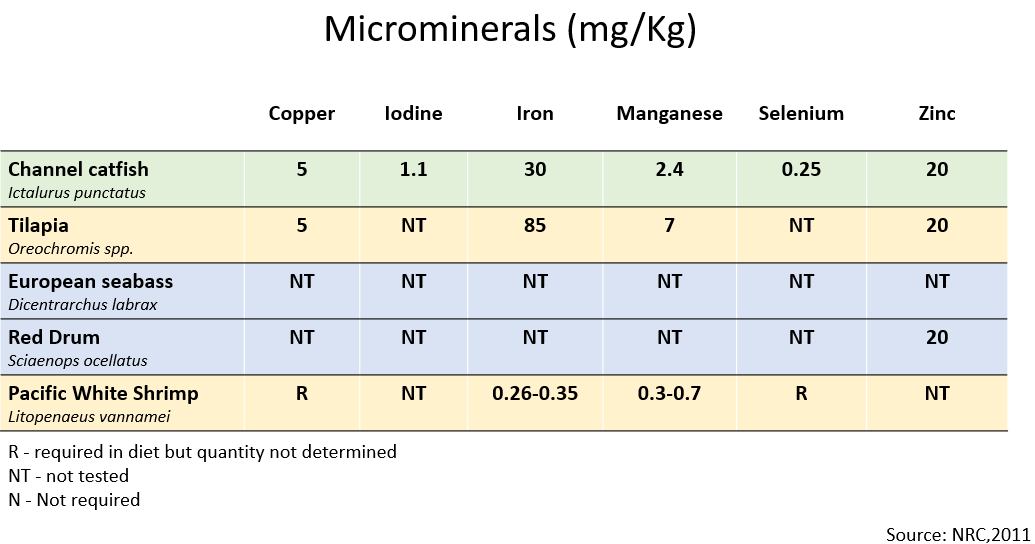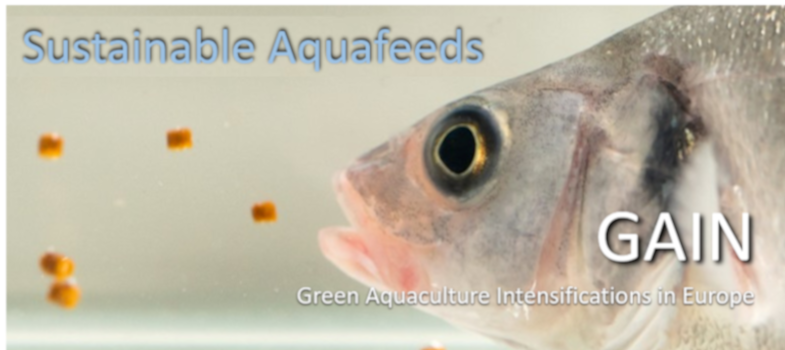Minerals
Information on mineral nutrition of fish and crustaceans is limited, in part because fish can obtain some minerals from the aquatic environment, which makes this quantification very complex.
Aquatic animals require certain amounts of these inorganic elements in their diet and/or water to function properly, but excessive amounts of some minerals in the diet or water can be toxic. The gap between what is needed and what is toxic can be fairly narrow in some cases.
Some essential minerals are required in higher concentrations (g kg-1 or %) and others in lower concentrations (mg kg-1 or μg kg-1). Therefore these elements are referred to as macrominerals and microminerals (or trace minerals), respectively.
- Macrominerals: calcium, phosphorus, magnesium, potassium, sodium, chlorine, and Sulphur.
- Microminerals: Iron, Zinc, Selenium, Copper, Manganese, Cobalt, Iodine, Molybdenum, Chromium, Fluorine, and Boron.
It is unlikely for fish to suffer from macromineral deficiencies due to gill absorption of waterborne ions. Nevertheless, phosphorus is an especially critical macromineral in fish diets, as there is little phosphorus in the water.
Given
that excreted phosphorus contributes to the eutrophication of water, there has
been interest leading to much research on phosphorus nutrition to minimize excretion.
Phosphorus is a major component of fish bones and scales, and diets deficient
in phosphorus affect organism growth as well as reduce tissue mineralization
and impair bone formation in young fish.

Figure 10. Schematic representation of the mineral's structural, physiological, catalytic, and regulatory functions in fish.
Table 6 presents a list of macro and microminerals requirements for some valuable farmed species, but remember that the requirements are affected by species, life stage, waterborne mineral levels, dietary supplemental form, antagonistic effects, stressors, and other factors.


Table 6. Macro and microminerals requirements for some valuable farmed species
Data on the dietary requirements of minerals in marine species is almost non-existent (except for phosphorus). The dietary requirement of a fish or shrimp species for a particular element will depend to a large extent upon the concentration of that element in the water body. At present, there is little information concerning the contribution of waterborne elements to the total mineral balance of fish or shrimp.
